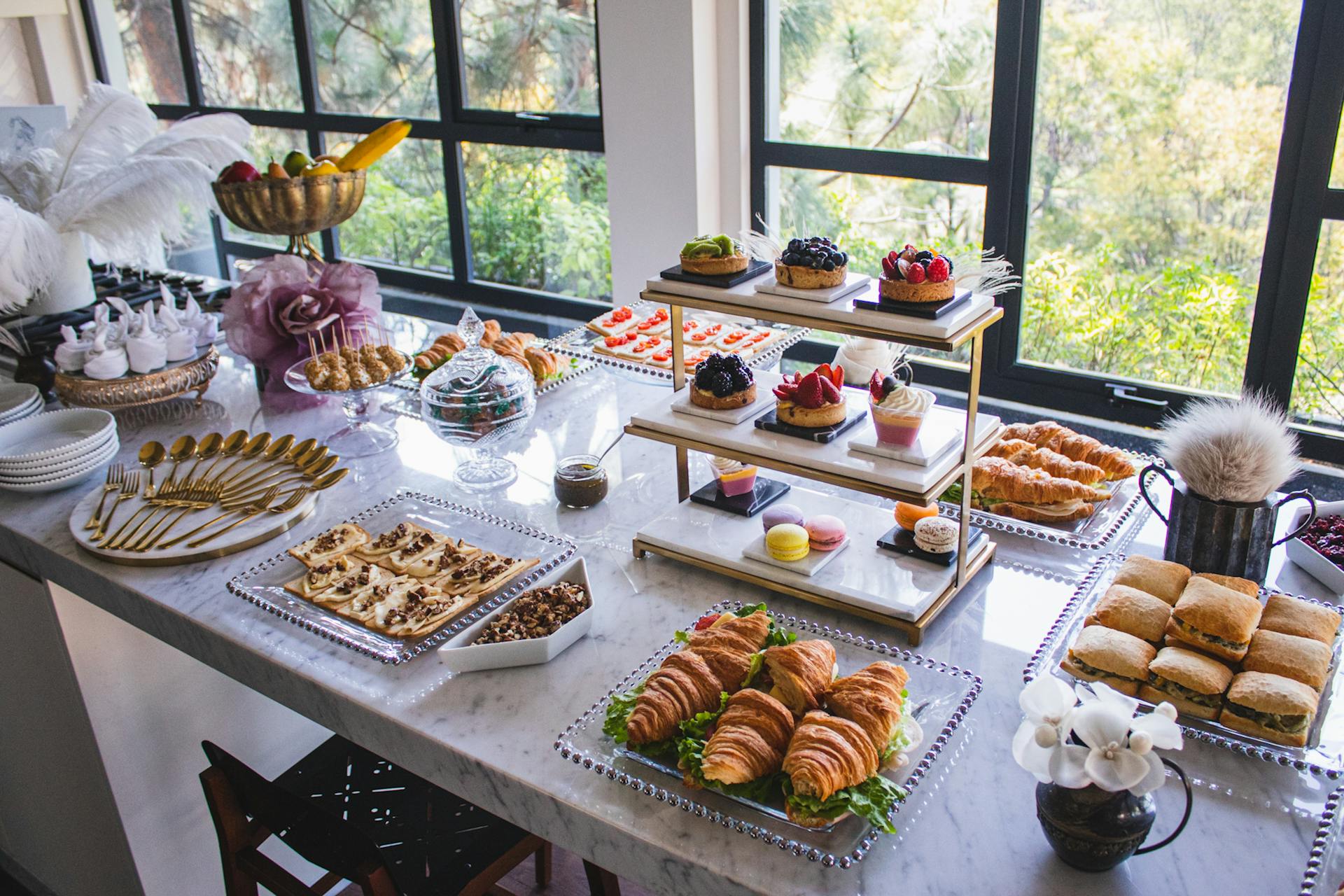French Cakes and Pastries: A Delicious Journey Through France’s Sweet Treats

French cuisine is celebrated worldwide for its artistry, refinement, and indulgence. Among the many delights it offers, French cakes and pastries hold a special place in the hearts of dessert lovers. These delicacies are not just treats but are deeply rooted in French culture and tradition. From delicate pastries to rich cakes, let’s take a mouthwatering journey through France’s most iconic sweet creations.
What Are French Pastries Called?
French pastries are broadly referred to as “pâtisserie”, a term derived from the French word “pâtissier,” meaning pastry chef. The world of French pâtisserie encompasses a variety of baked goods, including flaky croissants, creamy éclairs, and intricately layered mille-feuille. Each pastry is crafted with precision, using fine ingredients like butter, eggs, and flour, combined with artistic techniques that have been perfected over centuries.
Beyond the general term, specific pastries have their unique names. For instance, choux pastries like éclairs and profiteroles are made from pâte à choux dough, while laminated pastries like croissants and pains au chocolat are crafted using layers of butter and dough. Meanwhile, petit gâteaux, or small cakes, include delicate treats like madeleines and financiers.
What Is the Difference Between Financiers and Madeleines?
Two of the most beloved small cakes in French pâtisserie are financiers and madeleines. Though they may seem similar at first glance, they have distinct characteristics in terms of ingredients, texture, and shape.
- Shape: Madeleines are famous for their signature shell shape, achieved by baking them in a special scalloped mold. Financiers, on the other hand, are traditionally rectangular, resembling a gold bar—a nod to their origins in Paris’ financial district.
- Texture and Ingredients: Madeleines are light, spongy, and slightly cakey, often flavored with lemon zest or vanilla. Their batter includes baking powder, giving them a gentle rise. Financiers, in contrast, are denser and moister, with a rich, nutty flavor due to the inclusion of almond flour and browned butter.
- History and Origin: Madeleines are said to have originated in the Lorraine region of France, while financiers were first created by a pastry chef named Lasne in Paris, specifically for the city’s financiers who wanted a treat that wouldn’t dirty their hands.
How Do the French Eat Madeleines?
Madeleines hold a special place in French culinary traditions and are often enjoyed in various ways:
- With Tea or Coffee: Many French people enjoy madeleines as an afternoon snack or during “goûter,” the traditional 4 PM snack time in France. Dunking them into tea or coffee enhances their soft texture and brings out their delicate flavors.
- For Breakfast: Some prefer to have them for breakfast alongside a café au lait or hot chocolate, especially when they are freshly baked.
- As a Dessert: Madeleines can also be served as a light dessert, sometimes drizzled with chocolate or dusted with powdered sugar.
- With a Glass of Wine: Some French people pair madeleines with a glass of sweet wine or Champagne for an elegant touch.
The delicate yet comforting flavor of madeleines makes them a versatile treat that can be enjoyed at any time of the day.
What Is Financier Cake in English?
A financier cake is a small almond-based cake with a rich, buttery texture. The name “financier” directly translates to “financial” in English, reflecting its history as a favorite treat among Parisian bankers.
Financiers are distinct for their moist, dense texture, created by a batter that includes almond flour, egg whites, powdered sugar, and browned butter. This combination gives financiers their deep, nutty flavor and melt-in-your-mouth consistency. Despite being called a “cake,” financiers are more like petit fours—small, bite-sized indulgences rather than full-sized cakes.
These cakes are often made plain, but some variations include ingredients like raspberries, pistachios, or chocolate chips to add a burst of flavor.
What Is the Difference Between Financier and Canelé?
Financiers and canelés are both small French pastries, but they have significant differences in terms of ingredients, texture, and preparation.
- Texture: Financiers have a soft, dense, and slightly crumbly texture due to their almond flour and egg white-based batter. Canelés, on the other hand, have a crisp, caramelized crust with a custard-like interior, making them distinctively different from financiers.
- Ingredients: Financiers primarily use almond flour and browned butter, while canelés are made from a custard-like batter consisting of milk, eggs, sugar, flour, and vanilla, often flavored with rum.
- Baking Method: Canelés require a special copper mold coated with beeswax or butter, which helps achieve their characteristic dark, caramelized crust. They are baked at high temperatures to create a crisp exterior while keeping the inside soft and moist. Financiers, however, are baked in simple rectangular molds and do not have a caramelized crust.
- Flavor Profile: Financiers have a rich buttery and nutty flavor due to the browned butter and almond flour, while canelés have a deep caramelized taste with hints of vanilla and rum.
- Both treats are equally delicious but offer unique experiences in terms of taste and texture.
Conclusion
French cakes and pastries are more than just sweet indulgences; they are a reflection of France’s rich culinary heritage and craftsmanship. Whether it’s the delicate madeleine, the nutty financier, or the caramelized canelé, each pastry tells a story of tradition, artistry, and exquisite taste.
Exploring French pâtisserie is a delightful journey, whether you’re savoring a fresh pastry in a Parisian café or baking one in your own kitchen. So next time you crave something sweet, why not take inspiration from France and enjoy a taste of its legendary desserts?
Note: IndiBlogHub features both user-submitted and editorial content. We do not verify third-party contributions. Read our Disclaimer and Privacy Policyfor details.


